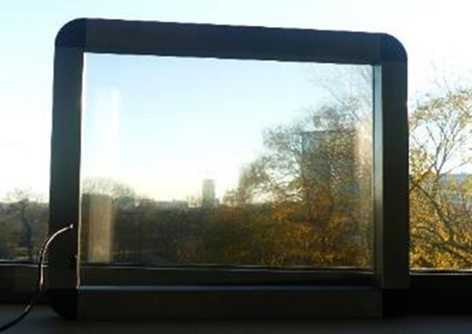Electrophoretic Light Modulator (ELM) Dynamic Glass Technology: A Daylight and Energy Performance Study
DOI:
https://doi.org/10.47982/cgc.9.514Downloads

Abstract
Mechanical heating and cooling are often required to balance the energy flows in and out of a space to maintain comfortable temperatures. There is significant pressure in many countries to reduce the energy consumption of buildings and one way to achieve this is to reduce the area of glazing. However, this conflicts with providing natural daylight which is critical to the visual comfort, health, and wellbeing of occupants. The typical approach currently used to improve glass performance is to use coatings applied to the build-up; the major limitation with glass coatings affecting most buildings globally relates to the solar and light transmission properties being fixed. This implies that a static glazing solution, is often not working optimally for most of the year. Dynamic glass solutions can be pre-programed, operated according to sensors which respond to the environment, or switched manually by occupants of the building to balance energy and visual comfort demands. This paper aims to present the findings of a study on a specific dynamic glass technology, Electrophoretic Light Modulator (ELM) produced by eLstar Dynamics, showing how this compares from an energy and daylight perspective against a ‘static’ typical glass with high performance coating in the climate of Amsterdam, the Netherlands. Using the software package IDA ICE, simulations were performed showing the benefits of adopting the eLstar technology in reducing energy demand while also improving internal daylight conditions.
Published
Issue
Section
Smart Glazing, Solar & BIPV
License
Copyright (c) 2024 Matthew Tee, Carmelo Guido Galante, Romaric Massard

This work is licensed under a Creative Commons Attribution 4.0 International License.



